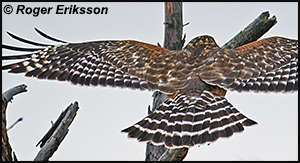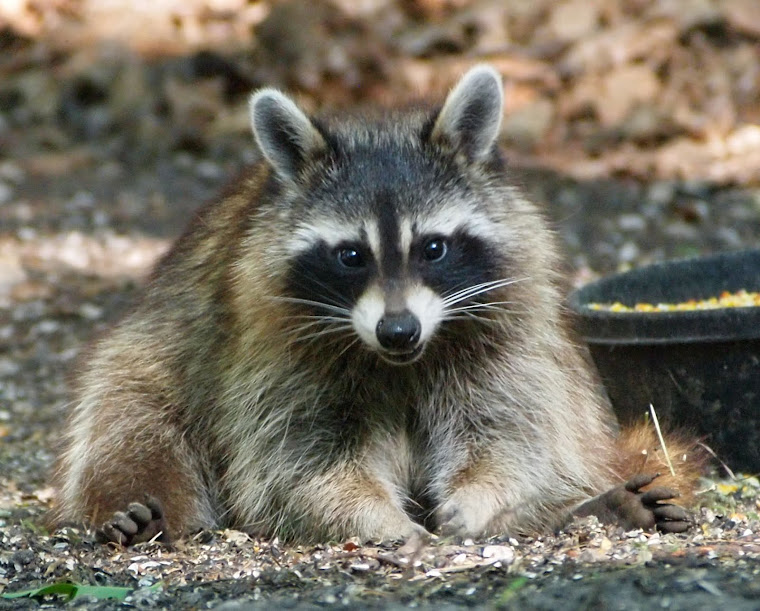Saturday, October 26, 2013
Science Daily - October 25, 2013
Monkey that purrs like a cat is among new species discovered in Amazon rainforest
Michigan Audubon - October 25, 2013
Featuring: Red-shouldered Hawk
One of the most distinctively marked common hawks
One of the most distinctively marked common hawks
Grounds (breeding, migration, wintering): Red-shouldered Hawks are resident to medium-distance migrants. The year-round range for these hawks includes Wisconsin, Michigan and Connecticut to its north, south to Florida and west to eastern parts of Texas. Breeding ranges include northern Wisconsin and into Montana, Michigan’s Upper Peninsula and portions of the Northern Lower Peninsula, the southern part of Ontario and the northern most New England states. Some of the southern species will winter in Mexico.
Size & Shape
Red-shouldered Hawks are medium-sized hawks displaying broad, rounded wings and a medium-length tail that fans out during soaring. As an adult this bird measures 16.9-24 inches in length with a wingspan between 37-43.7 inches and weighs around 1-1.7 pounds.
Coloring

Mature hawks are very colorful having barred reddish underparts, strongly banded black and white tail and wings. Immatures are not as colorful, displaying brown above and white underneath that is streaked with brown. Both immature and mature hawks show a pale, narrow crescent near its wingtips during flight.
Habitat
Predominantly forest raptors, Red-shouldered Hawks prefer bottomland hardwood stands, flooded deciduous swamps, and upland mixed deciduous–conifer forests. They tend to be found in open subcanopies allowing for easier hunting. More recently, the hawks have also adapted to living in suburban areas where houses and building are situated in woodlands.
Food
Small mammals, lizards, snakes, and amphibians make up most of the hawk’s diet. Occasionally they consume birds; recorded prey has included sparrows, starlings, and doves. Red-shouldered Hawks perch on a branch in the forest canopy and wait for their prey. They quickly descend, gliding gracefully and snatch up their prey.
Behavior
Red-shouldered Hawks are monogamous for the year. The male will perform a ”sky-dance” in which he calls while soaring, making a series of steep dives and then climbing back up in a wide, spiral incline, finally he dives rapidly towards the female until he perches upon her back.
The hawks are extremely territorial and will chase off most predators including crows, Great Horned Owls and even humans.
Sound
The call of the Red-shouldered Hawk is very distinct and if memorized is a great way to locate the bird. The call is described as a kee-ahh sound that repeats 5-12 times with each note lasting around half of a second.
Nests
Nests are reused each year by the same pair. They are constructed of sticks, twigs, bark, moss, lichens, and conifer sprigs with the parents adding fresh green leaves throughout the nesting season. The nest measures around two feet in diameter and is usually located in a broad-leaf tree below the forest canopy but towards the top of the tree. Nests are usually near a water source.
Conservation Status
Nationally, the hawk is listed as least concern with population levels appearing to be stable. However, in Michigan (and surrounding states) the Red-shouldered Hawk is listed as state threatened due to drastic decreases in suitable habitat and the use of DDT in the middle of the 20th century.
Interesting Facts
- According to Cornell Lab, “The Red-shouldered Hawk is divided into five subspecies. The four eastern forms contact each other, but the West Coast form is separated from the eastern forms by 1600 km (1000 mi). The northern form is the largest. The form in very southern Florida is the palest, having a gray head and very faint barring on the chest.
- At five days old the nestling can shoot their feces over the nest edge. A good indication of an active nest is a good amount of bird poop on the ground below.
- One hawk in California occupied the same nest for 16 years in a row.
- The oldest recorded Red-shouldered Hawk was at least 22 years and 5 months old. Banded in Florida in 1989, it was found dead (victim of a raptor attack) in Florida in 2009.
- The best time to observe Red-shouldered Hawk migration is in late October.
Your Bird Crew,
Tuesday, October 1, 2013
Michigan Audubon - September 27, 2013
Featuring: The Orange-crowned Warbler
A warbler lacking field marks
Breeding GroundsA warbler lacking field marks
This warbler can be found in the summer months in most of Canada and the west coast of the US ranging from central California north to Washington and in some parts of Nevada and Utah.
Migration Range
Now is the perfect time to see these warblers as they migrate through Michigan, you even have a chance of spotting these warblers at CraneFest! The Orange-crowned warbler migrates mainly through the central and eastern US states along with the southern west coast and portions of Mexico.
Wintering Grounds
During the winter months this warbler can be found in the southern states of the US ranging from California to North Carolina and throughout Mexico and Central America.
Size & Shape
The Orange-crowned Warbler is a small songbird and a medium-sized warbler. It measures 4.3 to 5.5 inches in length with a wingspan around 7.5 inches and weighs 0.2 to 0.4 of an ounce.
Coloring
Both sexes are a dusky olive green color with a grayer crown, whitish or yellowish eye ring and blurry streaks, the female is duller than the male. The bird's lack of any field marks is what helps identify this warbler. It does in fact have an orange crown which is often concealed except during courtship or when alarmed.
Habitat
During summer and winter the warbler prefers forest edges, especially in low deciduous growth, burns, clearings and thickets. During migration, it is often observed in riverside willows and in scrub oak chaparral.
Food
The Orange-crowned Warbler feed predominately on insects and spiders. It will occasionally eat berries, nectar or peanut butter.
Behavior
Very active foragers, the warbler gleans insects from leaves and tree blossoms and rapidly moves from perch to perch.
Sound
The song of this warbler is a fast trill that changes pitch at the end. Its call is a sharp chip.
Nests
Nests are constructed on the ground, usually on a steep slope. The open cup shaped nest consist of leaves, fine twigs, bark, rootlets, weeds, moss, plant down or wool, lined with fine grasses, moss or fur.
Conservation Status
Least Concern. Populations are doing well over most of its range. The warbler may be experiencing a gradual long-term decline.
Interesting Facts
- According to Cornell Lab of Ornithology, “The Orange-crowned Warbler is divided into four subspecies that differ in plumage color, size, and molt patterns. The one named celata is found in Alaska and across Canada, and it is the dullest and grayest. The Pacific Coast form, lutescens, is the brightest yellow. Found throughout the Rocky Mountains and Great Basin, orestera is intermediate in appearance. The form sordida is the darkest green and is found only on the Channel Islands and locally along the coast of southern California and northern Baja California.”
- Late migrants for the warbler species (late-September through mid-October), many if not all of the early fall (August to early September) reports of the Orange-crowned Warblers in the eastern US are actually dull Tennessee Warblers.
Your Bird Crew,
Subscribe to:
Posts (Atom)



